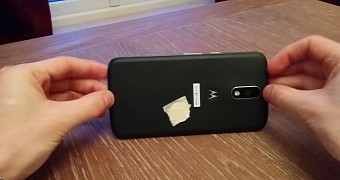We've been talking about Motorola's upcoming Android smartphones in the last couple of days, so those who have been following our reports already know some details about the US company's unannounced devices.
The Moto G4 Plus and Moto G (4th Gen) are two handsets that Motorola plans to announce sometime in May, but they will probably be available for purchase in June.
Until then, we'll be subjected to a wave of more or less controlled leaks with the sole purpose of raising hype for Motorola's next Android phones.
Since we've already been offered a glimpse of what the Moto G (4th Gen) could look like via some unofficial live pictures, it makes perfect sense that the next leaked information would include a video tour of the phone.
The folks over at hellomotoHK are well known among Motorola fans as providers of regular and pretty accurate information about unreleased devices developed by the US company.
No fingerprint scanner or Home button
It looks like they have been able to get their hands on a Moto G (4th Gen) prototype unit and made a video with the smartphone for everyone to check out Motorola's next mid-range handset.
Although they have not provided any details on the phone's specs, we see enough in the video to confirm that the Moto G (4th Gen) won't come with a fingerprint scanner nor a physical Home button.
Perhaps the Moto G4 Plus will include these features, but the Moto G (4th Gen) clearly does not benefit from them. The video also shows the small camera on the back side, along with the circular LED flash.
As mentioned earlier, there's no fingerprint scanner on the back cover, but Motorola put its Moto logo to set its devices apart from other smartphones.
According to the latest rumors, Motorola Moto G (4th Gen) comes with a 13-megapixel rear camera and a large 5.5-inch capacitive touchscreen display. It should also pack 16GB of storage inside.
Naturally, Motorola will include Android 6.0 Marshmallow operating system, along with its own Moto Display or Google's Ambient Display software. More details will probably emerge online very soon, so stay tuned.

 14 DAY TRIAL //
14 DAY TRIAL // 